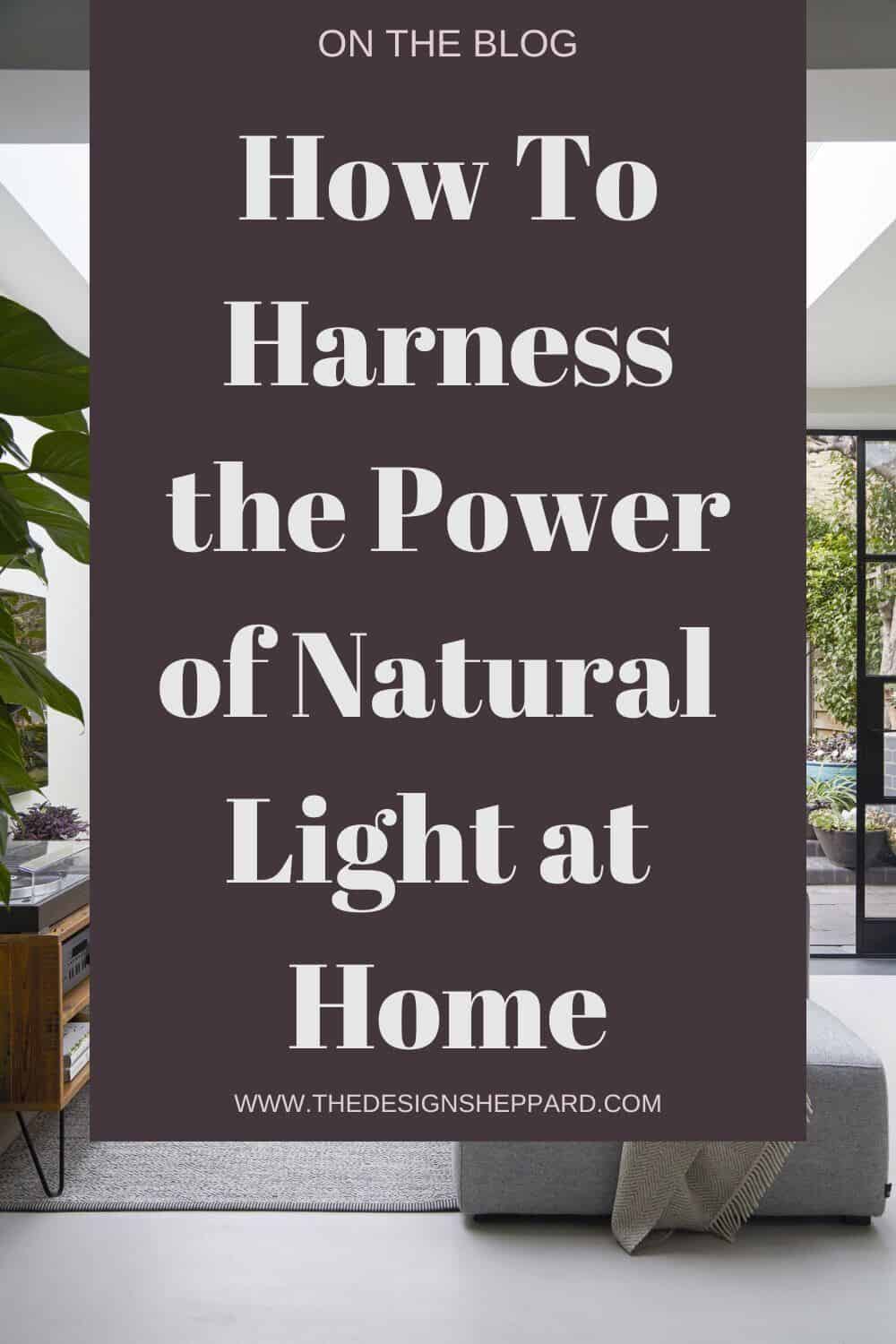Table of Contents
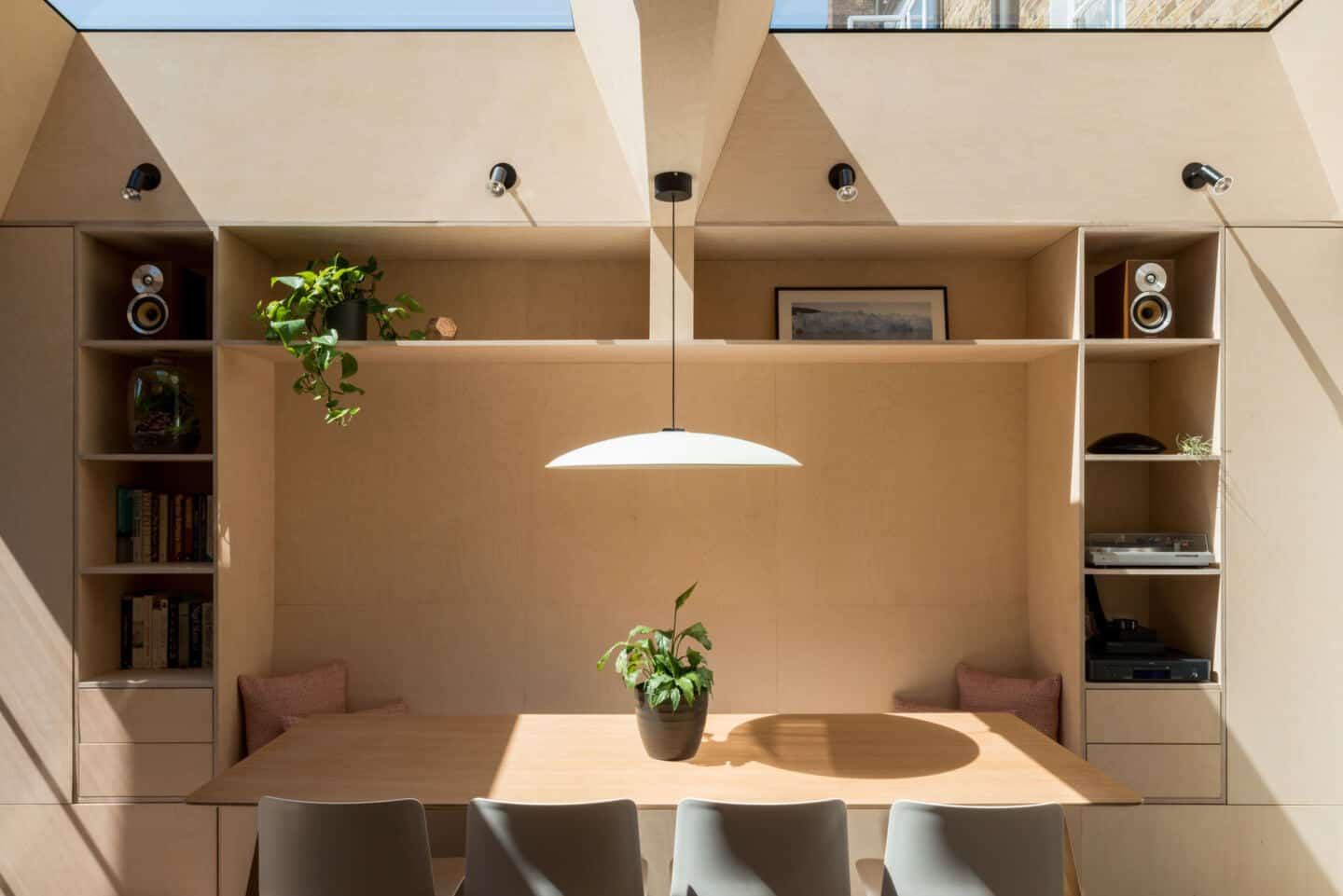
Natural light floods a plywood dining nook from two roof windows in the Vault House by Bradley Van Der Straeten Architects
I was approached by Pinterest a few weeks ago asking me if I would like to host my own show on Pinterest TV. Um, yes! Yes I would! And then it became a whole series. It took me all of a micro second to work out what topic I wanted to share in my series. Biophilic design of course as it is something I am so passionate about.
In the first episode, I presented an overview of what biophilic design actually is, what the main principles of it are and what the benefits are for our mental and physical health and wellbeing. In the second episode I explore how we can harness the power of natural light in our homes.
Urbanisation & Spending More Time Indoors
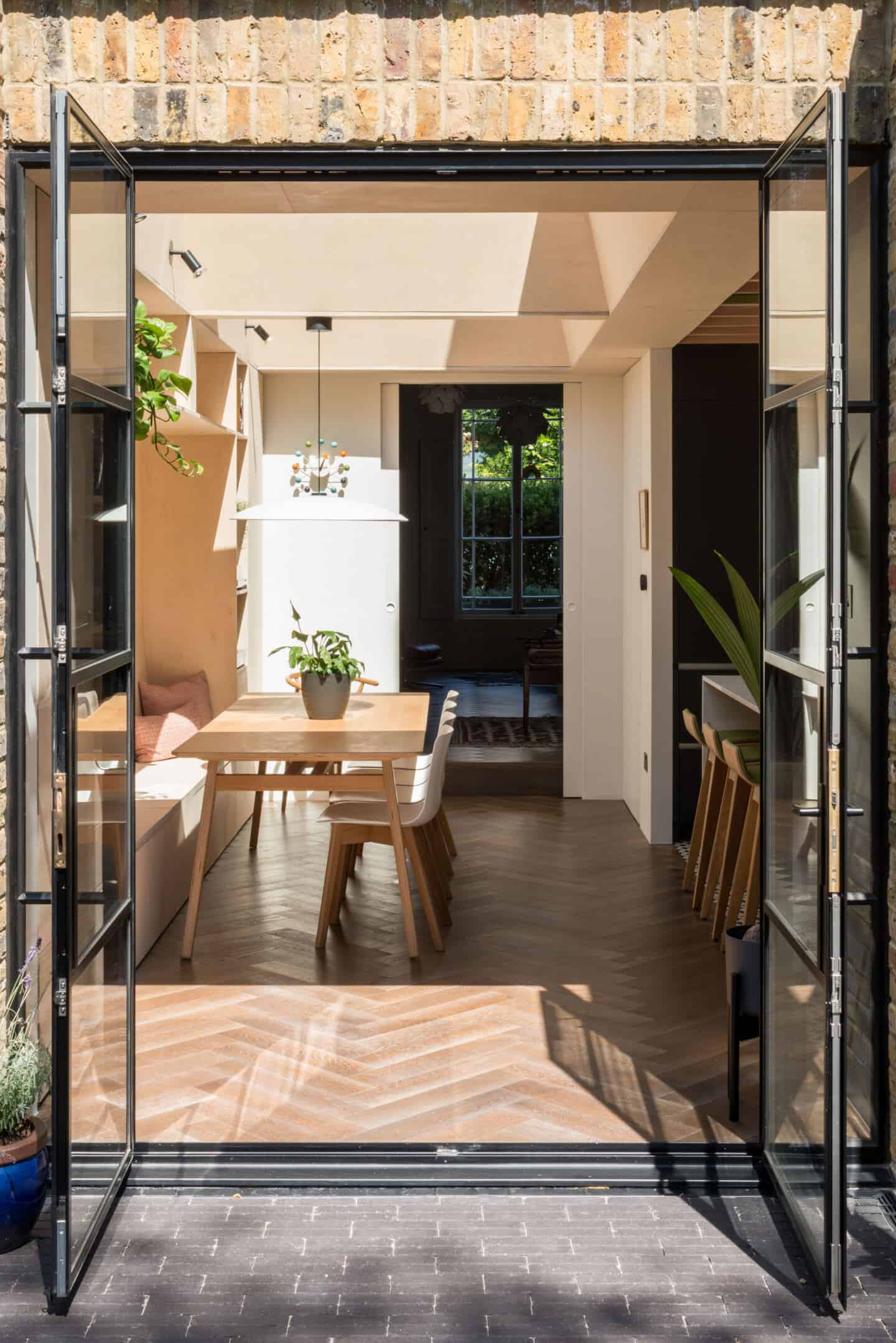

Natural light floods a plywood dining nook and kitchen from two roof windows in the Vault House by Bradley Van Der Straeten Architects
Lighting is such an integral part of our interiors and it is not easy to get right. In the past few centuries, humans have become predominantly urban dwellers. This shift from countryside to city environment has caused a persistent disconnect from nature. It is projected that by 2050, 68% of the developed world will be urbanised, and increasingly distanced from nature and natural systems.
There is also a direct correlation between the increasing urbanisation of our society and rising stress rates. In fact, stress has been called the “health epidemic of the 21st century” by the World Health Organisation.
Studies have shown that in North America and Europe we are now spending 90% of our time indoors. For me as a 40 year old that means I have spent 36 years of my life indoors. That is mind-blowing and probably scarily accurate. Even more crazy is that some species of whales spend more time at the surface than humans spend outdoors.
The Harmful effects of Artificial Lighting
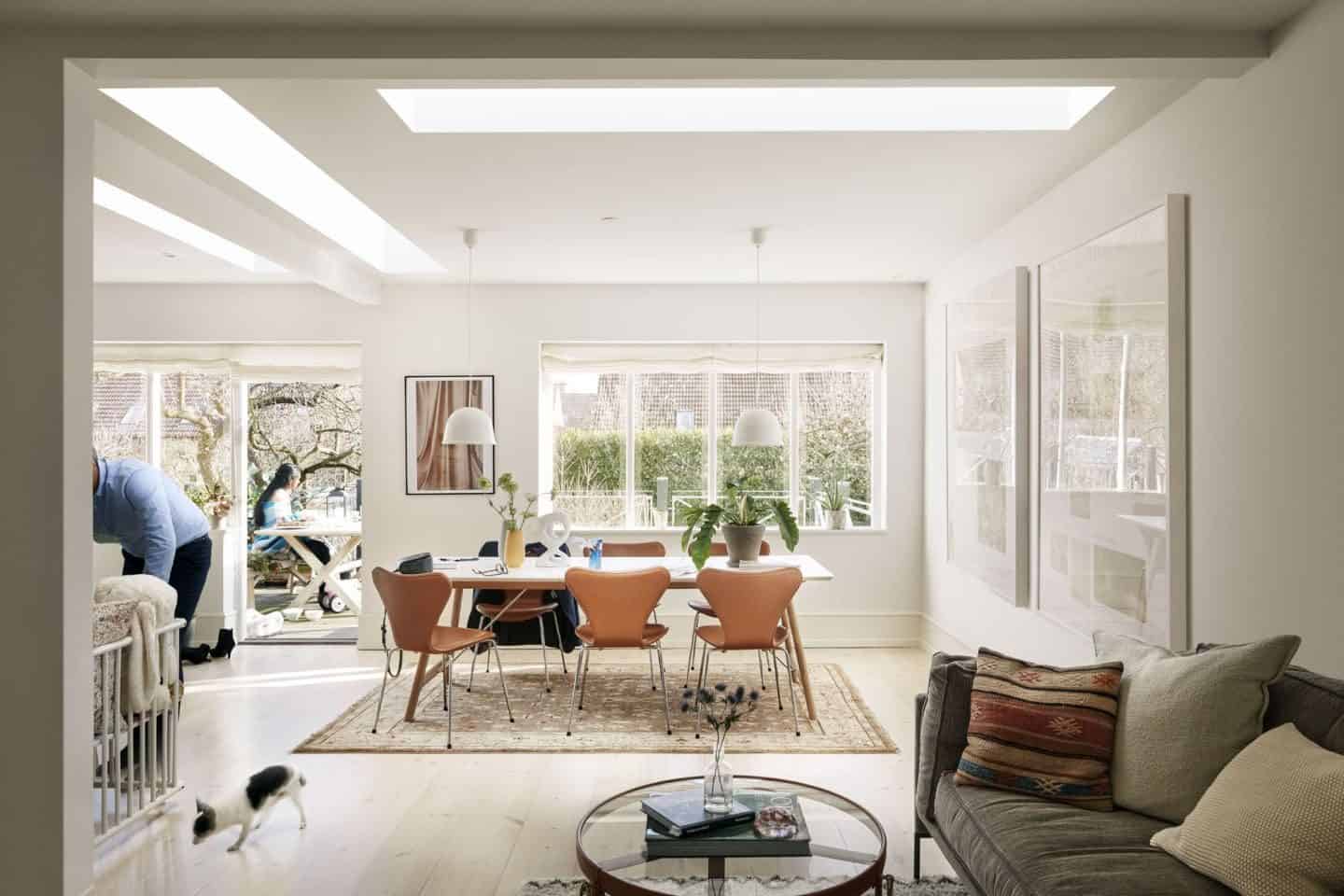
Spending 90% of our time indoors is a lot of time in artificial lighting which really isn’t good for our health. Artificial light has a very disruptive effect in our circadian rhythms. We need to spend time outside in natural light so that our bodies can function as they were intended to. Natural light helps to regulate our circadian rhythms and co-ordinate our mental and physical systems.
If our circadian rhythms are disrupted by too much exposure to artificial light, particularly at night time, it can lead to disregulated nervous systems and health issues such as increased stress, emotional distress, mood disorders, depression, memory problems, general poor performance, disrupted sleep patterns and even critical illnesses such as obesity, heart problems and breast cancer.
Allowing Nature to Inspire Lighting

However, when it comes to lighting our homes, if we take our queue from nature, we can’t go far wrong.
Study nature, love nature, stay close to nature. It will never fail you.
Frank Lloyd Wright, American architect, interior designer, writer, and educator
Lighting is an integral element of biophilic design and there are a number of ways that we can work with lighting to harness the powers of biophilic design. This is what is so wonderful about biophilic design, it is a really holistic approach to design and many of the associated principles overlap.
Bringing in More Natural Light
The most obvious way to bring nature indoors when it comes to lighting is to bring more natural light into your home. This is much easier said than done unless you are building your own home from scratch and you can design the home to really maximise the amount of natural light that comes in.
Add More Windows and Doors
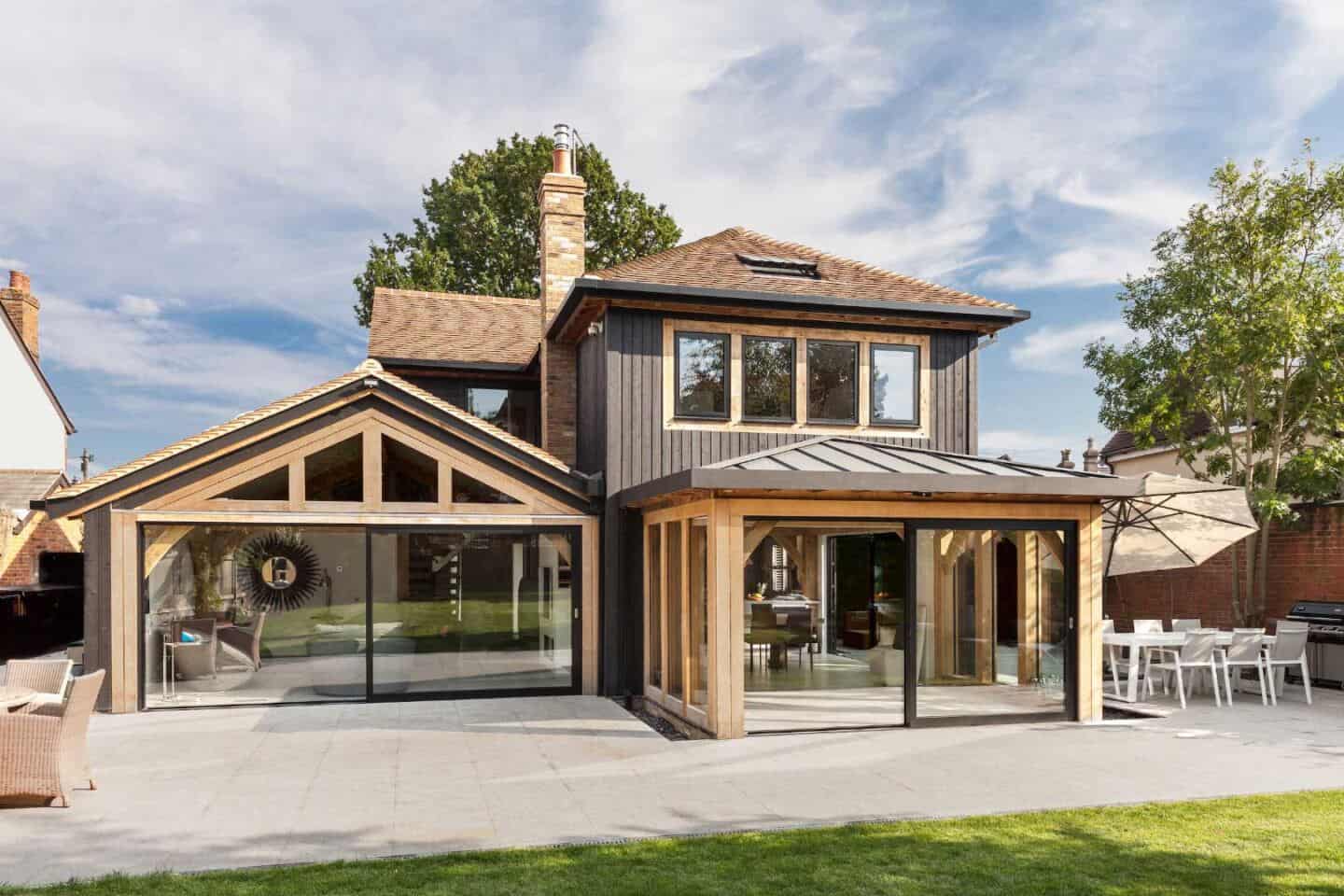
A home with KustomSlide Mono Aluminium Sliding Doors from Kloeber that maximise natural light
If you are designing your home from scratch you can make sure you plan in many more windows and doors. Flooding the space with natural light allows our bodies to work according to the natural rhythms of the day and night cycle.
Making windows and doors as large as possible and placing them strategically to ensure that light can enter the home at all times of day will bring maximum benefits. Having dual aspect rooms with windows on adjacent walls that provide views in more than one direction are better than having windows in just one wall.
It can also help to change out any solid internal doors for ones that are glazed instead. This will allow light to pass from one room to another. If privacy is a concern, for example bedroom and bathroom doors, you can get doors that have reeded or fluted glass.

The view through glass doors to the kitchen, dining room and garden beyond in the refurbishment of a North London terraced house by Cairn Architects | Photography by Peter Landers and Anna Stathaki
Add External Glazed Walls
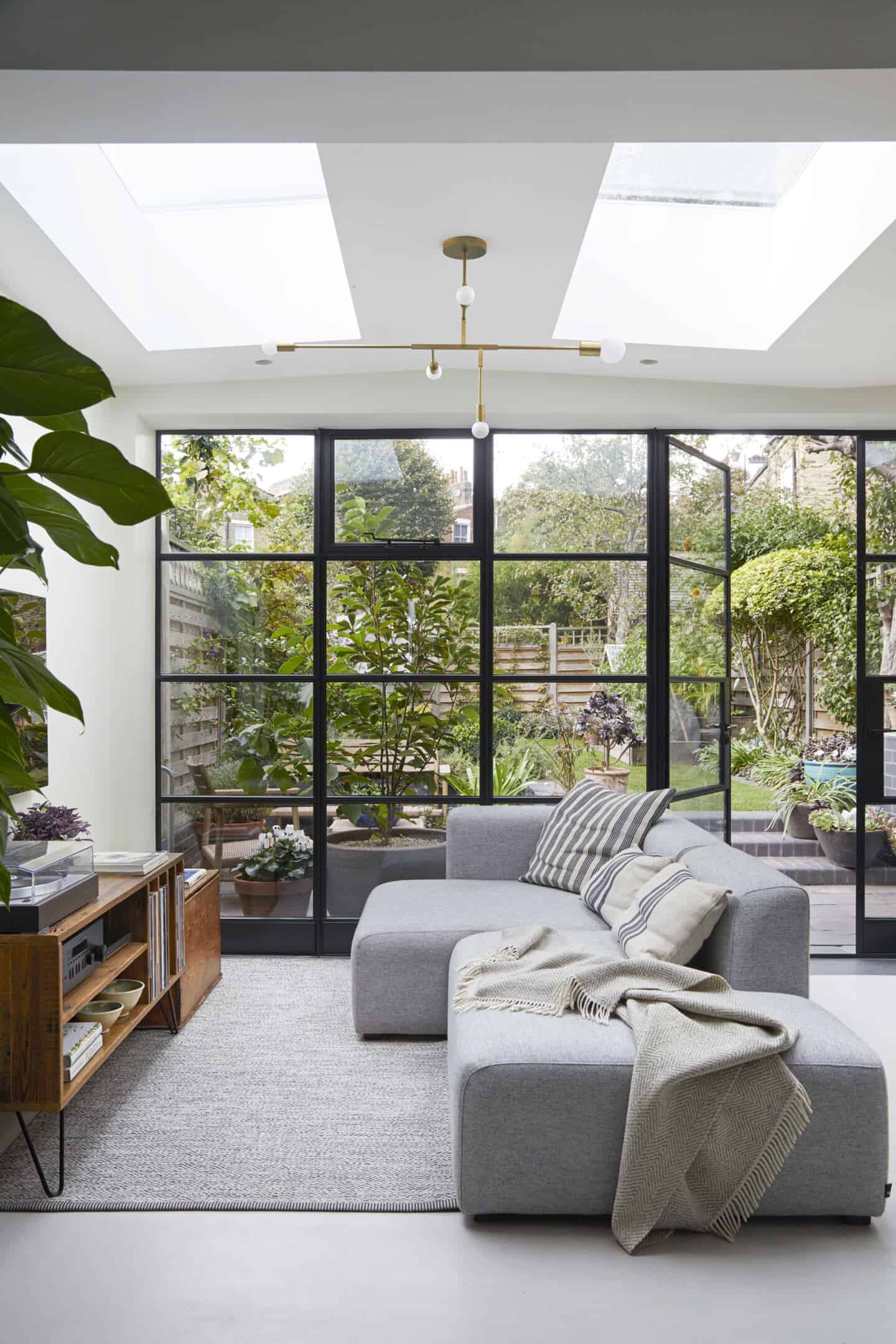
Natural light floods this extension and refurbishment of a North London terraced house by Cairn Architects | Photography by Peter Landers and Anna Stathaki
If you are building from scratch, adding glazed external walls is a great way to ensure that natural light can enter your home more easily. But this can also apply to home renovations.
If you are planning an extension to your home, using glazed walls to create a glass box effect will allow the natural light to stream in unimpeded.

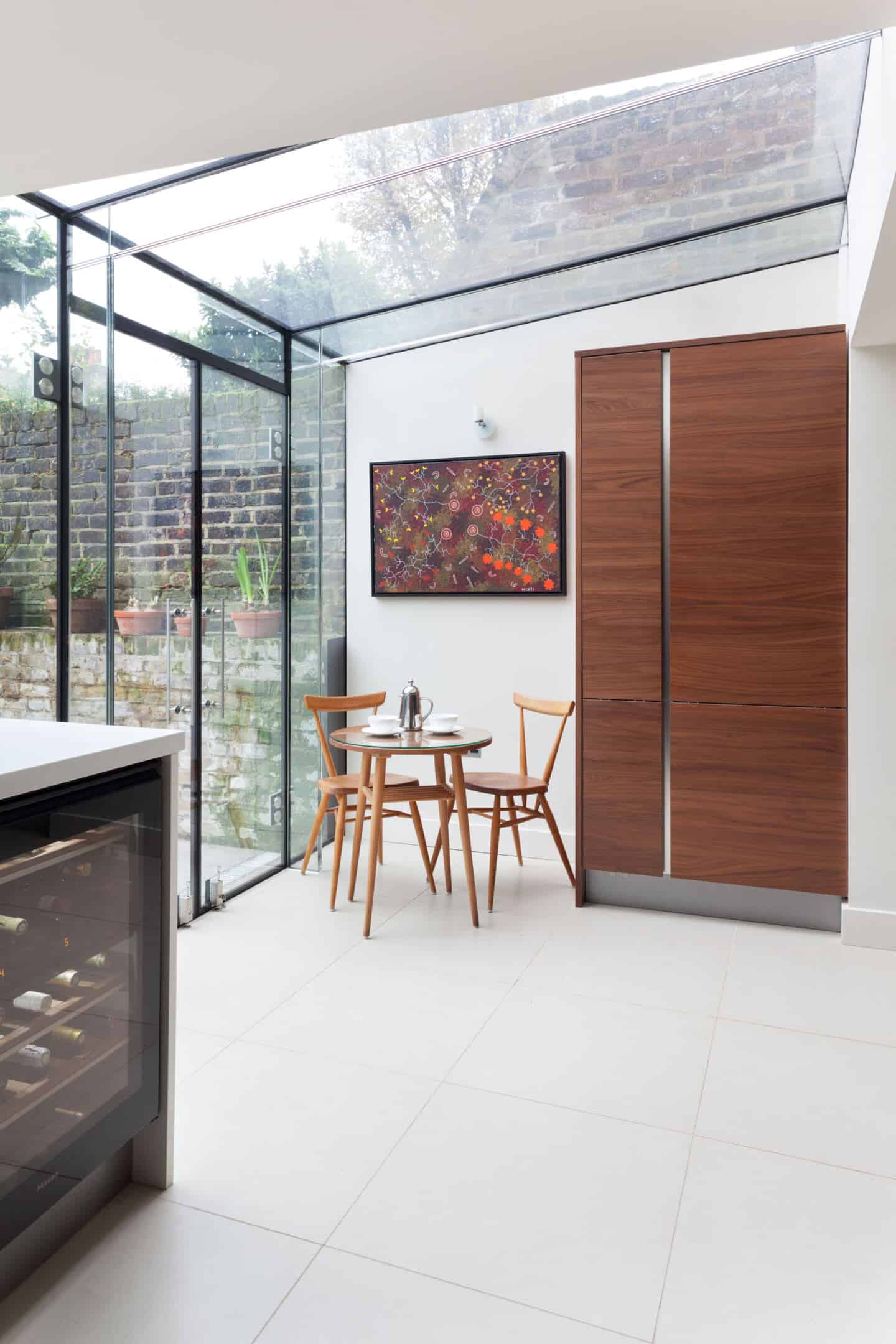
A glass extension to the rear of a Grade II listed property by London Contemporary | Photography by Paul Craig
Add Glass Partitions

You can also help the natural light to move through your home more easily by replacing internal walls with glass partitions. You will still get the same sense of zoning your home and break up the space, but you won’t prevent the light from moving through the space.
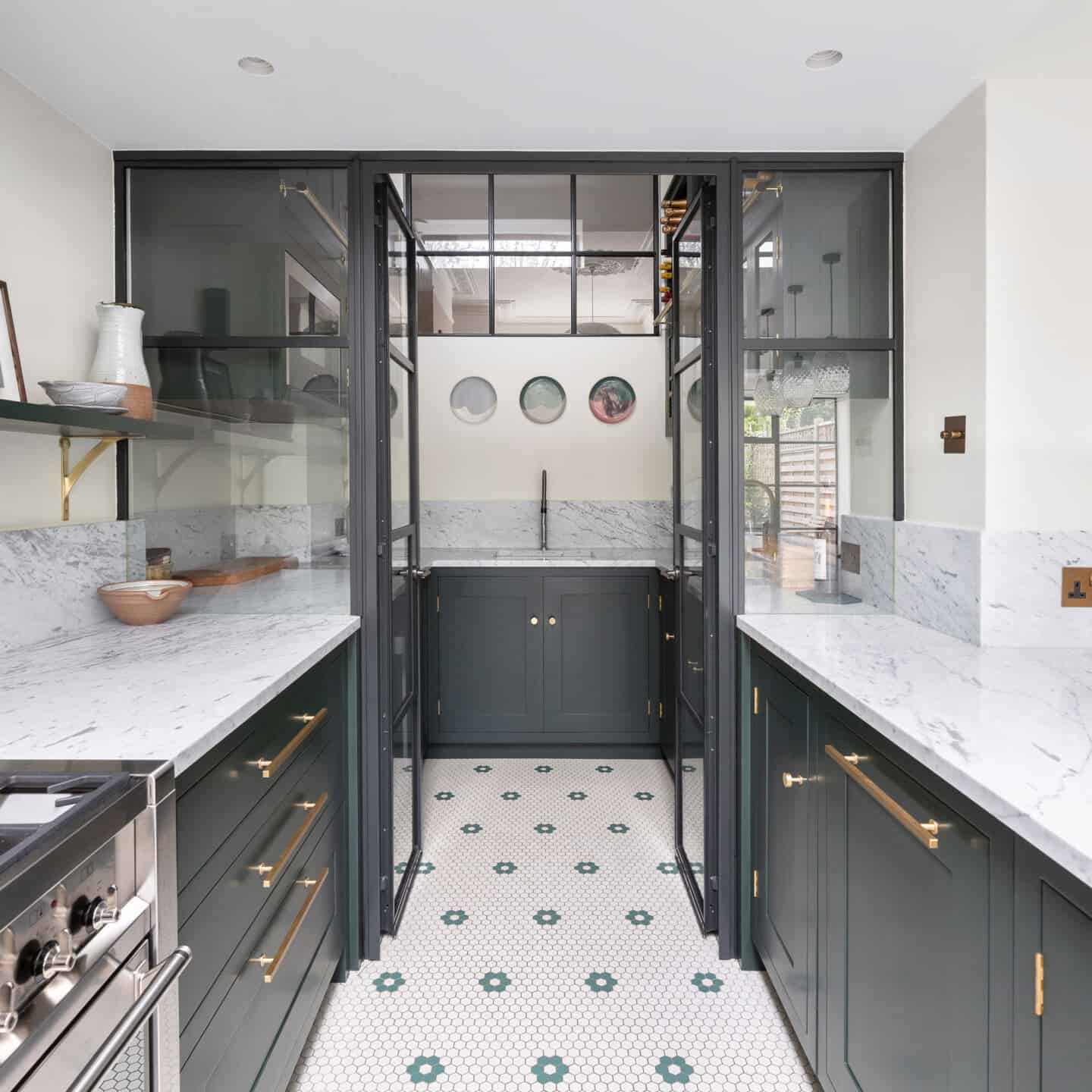
Natural light floods the kitchen of a North London terraced house by Cairn Architects | Photography by Peter Landers and Anna Stathaki
Small internal windows can also help the natural light pass from one room to another and can help to illuminate any particularly dark rooms or spaces.

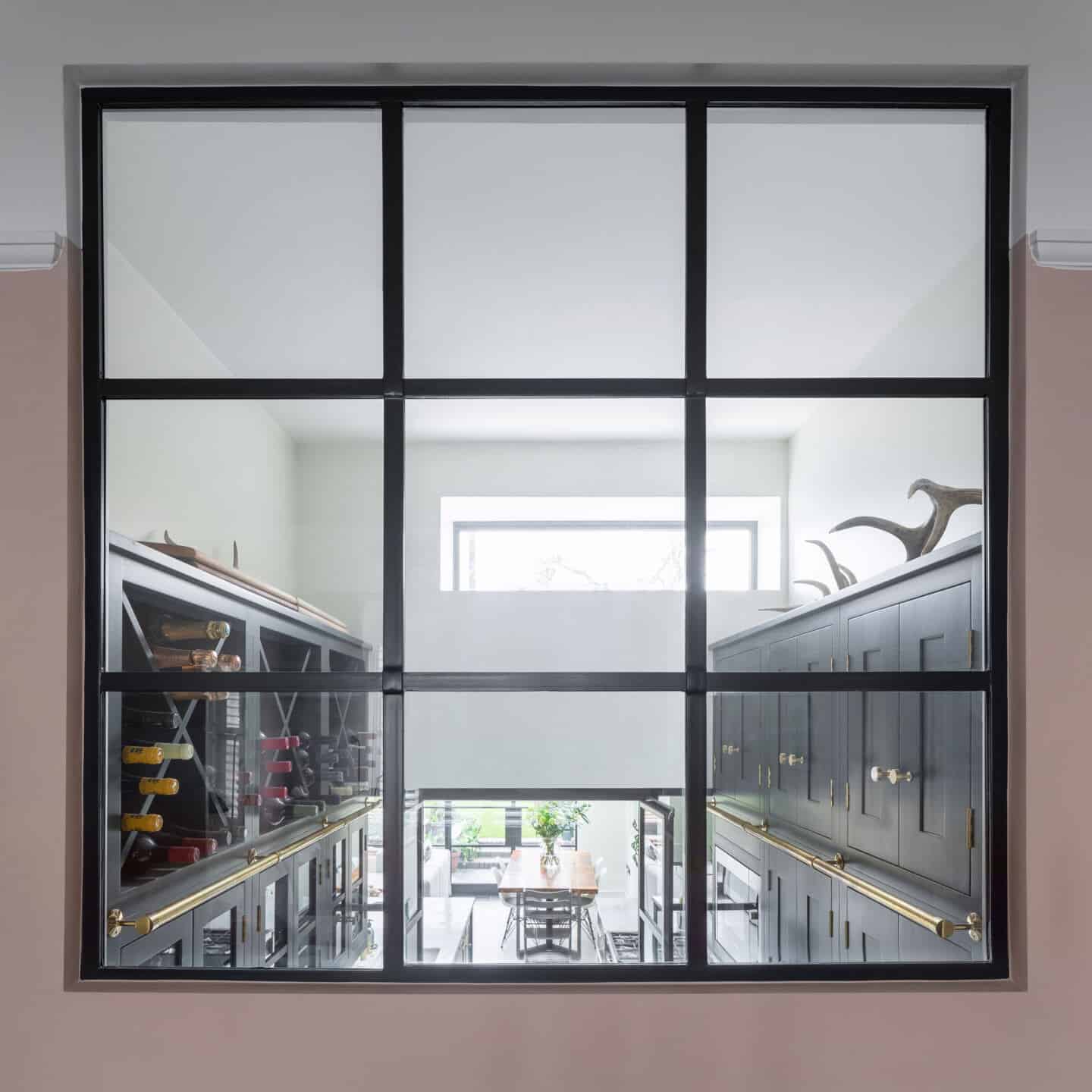
The internal window in the home office allows natural light to move through this North London terraced house by Cairn Architects | Photography by Peter Landers and Anna Stathaki
Add Roof Lights to Increase Natural Light


Natural light floods a plywood dining nook and kitchen from two roof windows in the Vault House by Bradley Van Der Straeten Architects
Roof lights are another great way to get extra daylight into your home. Whether you use them instead of adding extra doors and windows or as well as, you can really make the most of how much light is entering your home.



You can add roof lights if you have a pitched roof but you can also add them to flat roofs. There are plenty of companies now that also offer bespoke sizes so you can make them work in your home no matter what restrictions you are dealing with.

Velux Cabrio balcony roof windows
Velux also do terrace windows and cabrio windows which allow you to create a small balcony on your roof. I discovered these while thinking about how I would like to convert my loft and maximise the natural light in the space.
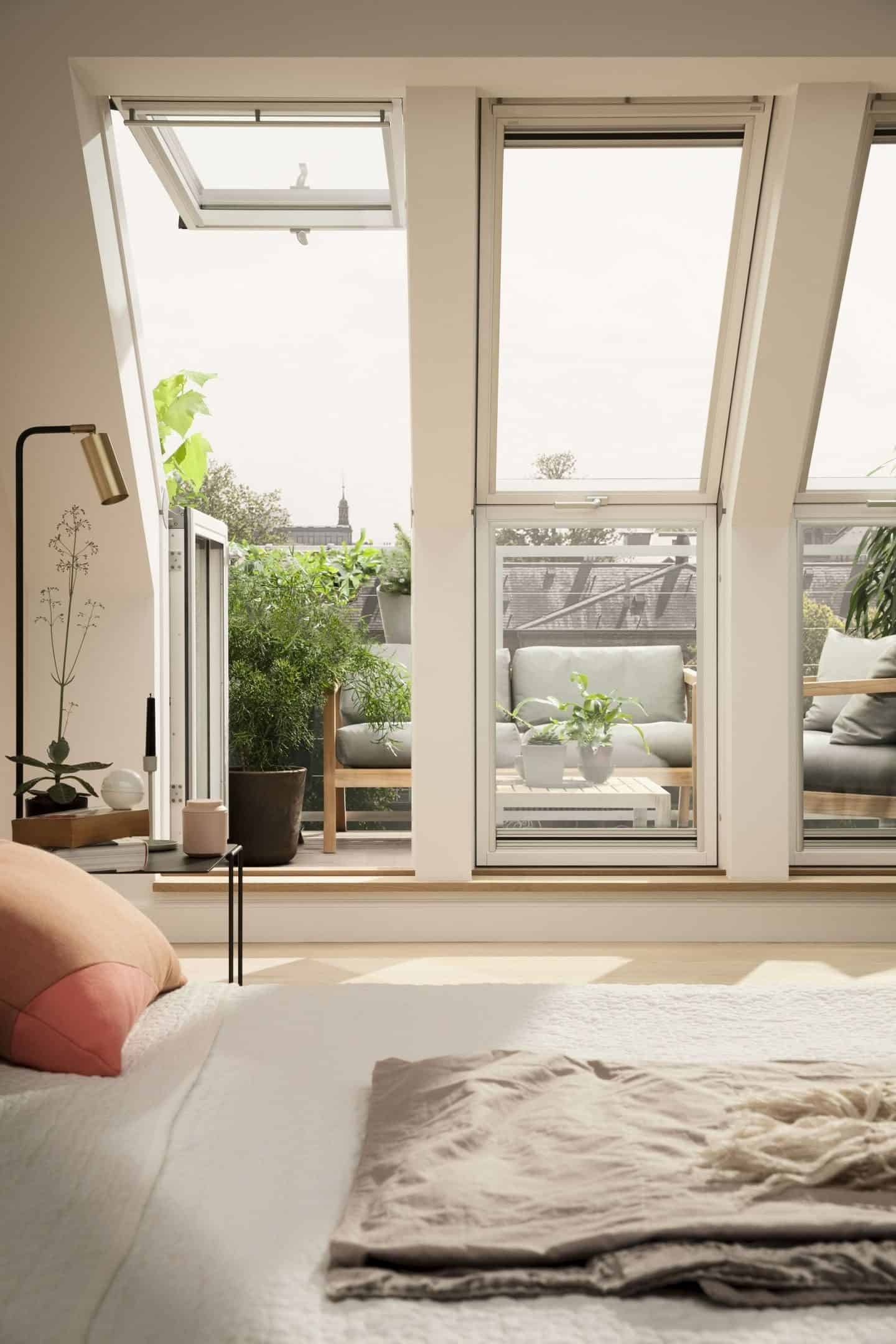
Add Sun Tunnels into Space with Little Natural Light

Sun tunnels are another great solution for pitched or flat roofs as they allow you to experience the changing light of the seasons and times of day. They can be used to bring extra light into any room in the house as long as the ceiling of that room is not too far from the roof.

It’s not just sunlight that can be brought in with a sun tunnel either. They allow you to experience changes in weather, passing clouds and even moonlight.
Use Mirrors to Reflect Natural Light

A window mirror from Dunelm gives the illusion of an extra window in this hallway
If natural light isn’t abundant in your home, one thing you can do to multiply it is to add mirrors. Mirrors help to reflect the light that is coming in and bounce it around the room creating the illusion of more natural light. Place mirrors opposite and adjacent to any windows for maximum benefit.
If you can’t add more windows to your home, adding mirrors that look like windows is a good alternative, particularly if they can reflect views of outdoors.
Bring in Dynamic and Diffuse Light
The principle of biophilic design that refers to lighting is all about dynamic and diffuse light. This means that it is important to incorporate varying intensities of light and shadow that change over time and mimic the lighting conditions that we might experience out in nature.
A space that has good dynamic & diffuse light conditions allows us to experience the time and movement through the light. Think of the dappled light under a canopy of trees, or the reflections of rippling water on a wall. These patterns are what we call fractals, and our brain is programmed to look for these fractals so incorporatingthem into our homes is beneficial.
Add Soft, Flowy Curtains or Drapes to Soften Natural Light
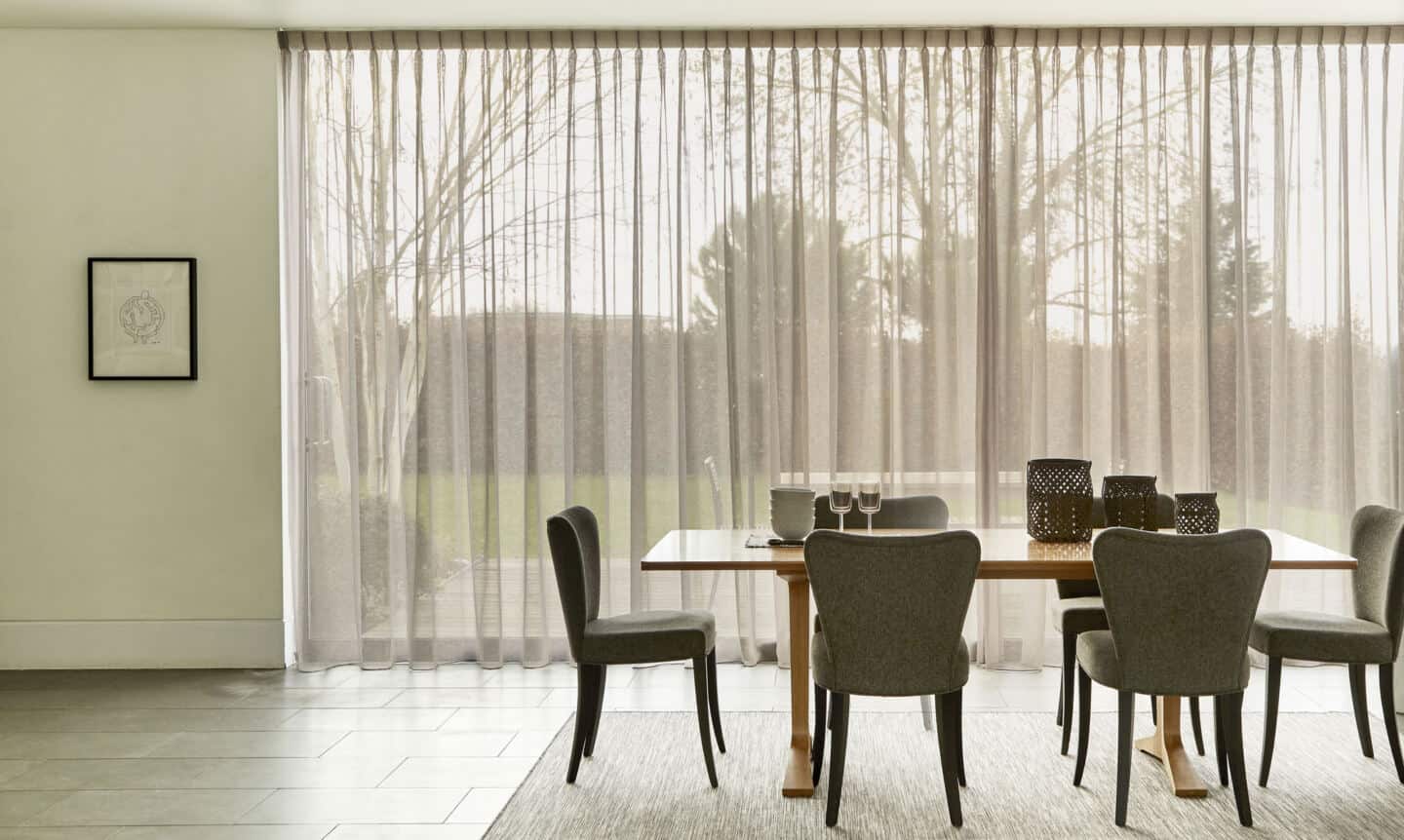
Somerton Linen Voile Curtains from Thomas Sanderson
Diffuse light is when light has been dispersed and scattered evenly across a surface and has been softened slightly to reduce the glare. This effect can be seen in nature when sun light is refracted by cloud cover, fog or a forest.
We can achieve this in our homes by using soft, flowy curtains or drapes to soften any harsh sunlight that comes into our homes. This is particularly useful if you do have large expanses of glazing that may cause stron direct light to enter your home.
Choose Lights That Create Shadows Inspired by Nature

BE Water Lamp from the WAW Collection designed by Fernando Correa
If you cannot create dynamic and diffuse light conditions naturally, you can always experiment with biomimicry and use lighting products that are modelled on this biological process. Lights that create shadows that look like a tree canopy or light relfected off water for example can add a sense of movement to the space which holds our attention and intrigue us.


Add Window Film that Creates Interesting Shadows


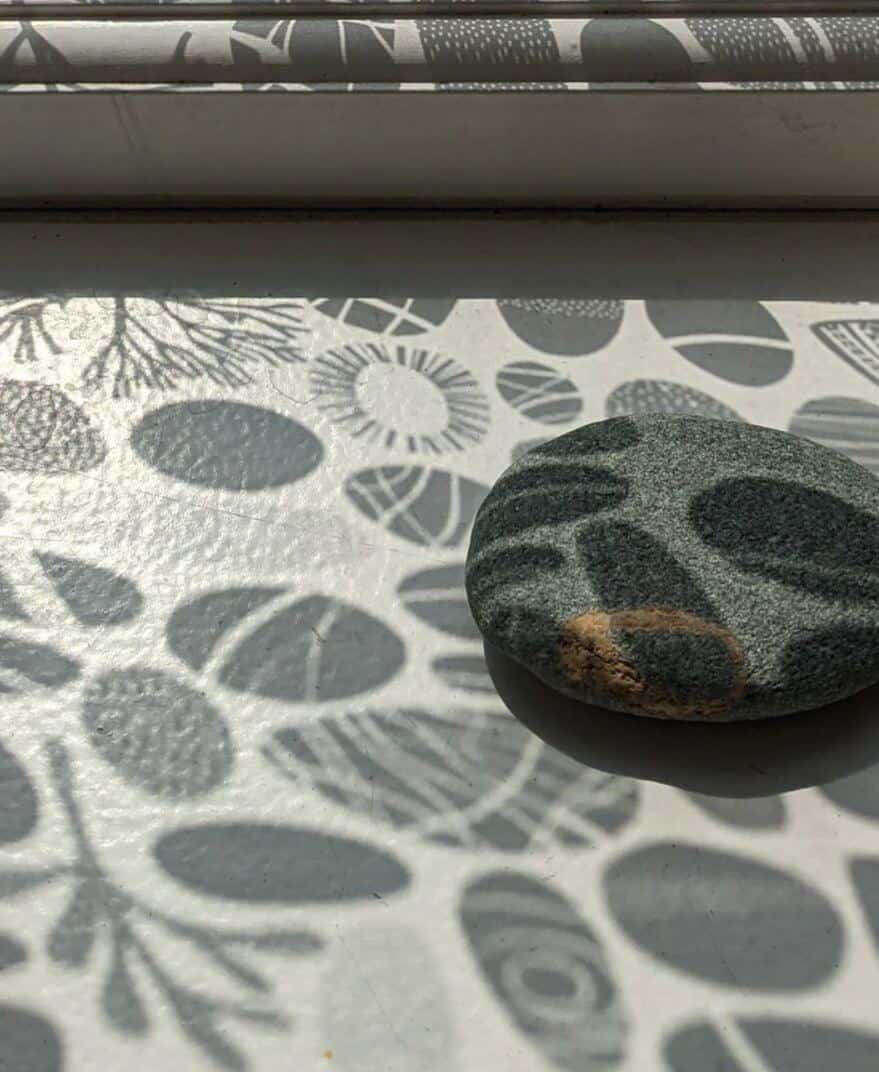
Window film by Hannah Nunn for The Window Film Company
Window film is a great way to create more shadows in your home and to mimic the effect of dappled light. When sunlight comes pouring in through the windows, doors or glazed walls, a window film can help to turn this light into something that more ressembles the light and shadows that we might experience outside.
Opt for window films that depict nature for maximum effect. The shadows that the window film casts should move and change throughout the day as the sun moves through the sky and enters your home from different angles.
Choose Lights That Mimic the Changing Time of Day
Throughout the day, the colour of sunlight changes and our bodies respond to this. Light is yellow in the morning, blue at midday, and red in the afternoon and evening. Blue light causes our bodies to release serotonin which gives us more energy and helps us to feel alert. As blue light fades into the evening and we see more red light, our body produces melatonin insted which helps us to feel calmer and prepare for sleep.
If we are spending a lot of time indoors it helps if we can mimic the changing colour of the light throughout the day. There are lamps and lights that you can buy that work on this principle such as wake-up light alarm clocks.
Choose Lighting in Organic Designs and Materials

Flock Chandeliers by Tom Raffield
The final way that you can can harness the power of light in your home is less about the lighting system itself and more about the decorative appearance of the light fittings. Choosing lights that feature organic shapes and materials that can be found in nature has many benefits.
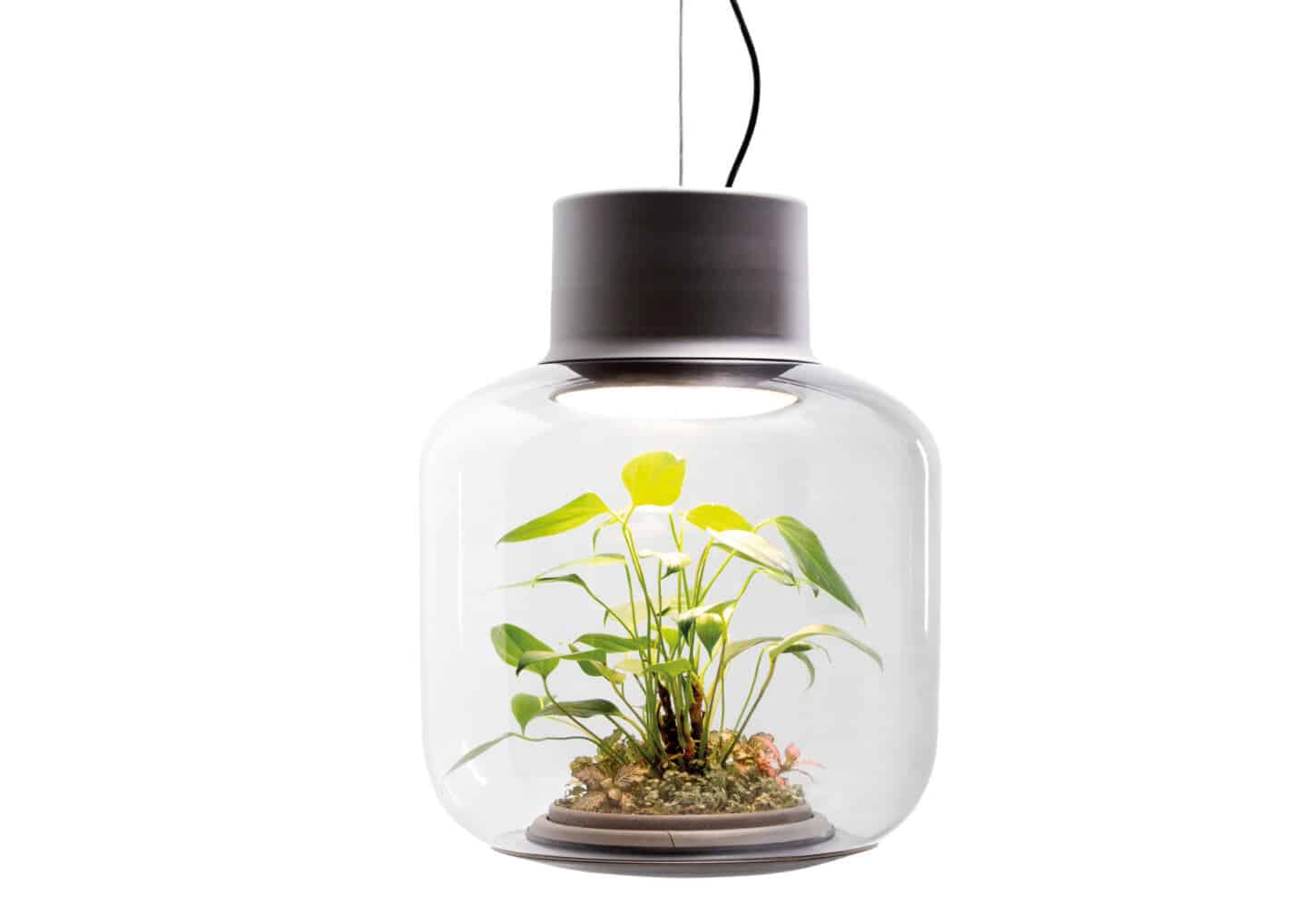
The Mygdal Plantlight by Nui Studio allows plants to grow even in windowless places
Look for lights and lamps that either incorporate foliage or are symbolic representations of life and make us think of living things. Choose products that are contoured, patterned, textured or feature the numerical arrangements that we can find in nature.

SOURCE LIST
- Cara Pendant Light from Lights4Living (affiliate)
- Barnacle Hanging Lamp by Kenneth Cobonpue
- Nymph Scone by KOKET
- Poppy Hanging Lamp by Kenneth Cobonpue
- Kris Kros Hanging Lamp by Kenneth Cobonpue
- Willow Pendant by Laura Ashley from Lights 4 Living (affiliate)
- Tilow Wall Light by Tom Raffield
- Ursula Wall Lamp from Cult Furniture
- Foliage Wall Lamp by Eichholz from Sweetpea & Willow
- Palm Leaf Light by Cult Furniture
- Las Palmas Floor Lamp by Sweetpea & Willow
FURTHER READING
If you are interested in learning more about how to incorporate the principles of biophilic design into your own home, you may be interested in reading these posts.
five reasons to maximise natural light at home
Biophilia in Design: Bringing Nature into the Home
Biophilic Office Design: How to Create the Perfect Home Office
Biophilic Kitchen Designs: How to Get the Look
5 Exciting Ways to Invite Nature into Your Home with Textured Walls
How To Use Organic Shapes in Interiors
If you found this post useful, don’t forget to pin it for later. And if you have any tips to share, please leave them in the comments below.
